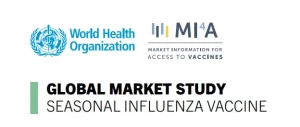What is Genetic Toxicity of Base Editing and Prime Editing?
- Oregon Reverses Course: From Decriminalization to Recriminalization of Drug Possession
- Why Lecanemab’s Adoption Faces an Uphill Battle in US?
- Yogurt and High LDL Cholesterol: Can You Still Enjoy It?
- WHO Releases Global Influenza Vaccine Market Study in 2024
- HIV Infections Linked to Unlicensed Spa’s Vampire Facial Treatments
- A Single US$2.15-Million Injection to Block 90% of Cancer Cell Formation
What is Genetic Toxicity of Base Editing and Prime Editing?
- Was COVID virus leaked from the Chinese WIV lab?
- HIV Cure Research: New Study Links Viral DNA Levels to Spontaneous Control
- FDA has mandated a top-level black box warning for all marketed CAR-T therapies
- Can people with high blood pressure eat peanuts?
- What is the difference between dopamine and dobutamine?
- How long can the patient live after heart stent surgery?
What is Genetic Toxicity of Base Editing and Prime Editing?
Gene editing has emerged as a promising tool for precise correction of disease-causing mutations in hematopoietic stem/progenitor cells (HSPCs), offering a way to mitigate the risks associated with random genome insertions and uncontrolled transgene integration.
Over the past decade, the CRISPR-Cas system, which induces site-specific DNA double-strand breaks (DSBs) using guide RNAs (gRNAs), has seen widespread use in this regard [1]. DSBs can be repaired by two main pathways:
(1) non-homologous end joining (NHEJ) or microhomology-mediated end joining, often leading to insertions or deletions (indels) at the break site that disrupt or modulate coding sequences;
(2) homology-directed recombination (HDR), which utilizes exogenous DNA with homologous sequences to achieve gene replacement or insertion.
However, DSBs can have adverse effects, such as activating the p53-dependent DNA damage response, resulting in large deletions, translocations, or chromosomal abnormalities, increasing the risk of genetic toxicity [2,3].
Furthermore, HDR-mediated gene editing is restricted to the S/G2 phase of the cell cycle, limiting its applicability in HSPCs.
Recently, researchers have developed novel gene editing techniques based on Cas nickase (nCas), such as base editing and prime editing, which bypass the need for DNA DSBs and HDR, allowing for precise small-scale edits while ensuring the generation of homologous gene products at the editing site. These base editors (BEs) primarily consist of a nucleotide deamination domain for single-strand DNA modification and an nCas component capable of inducing single-strand breaks (SSBs), guided by specific gRNAs, and rely on in-cell repair systems to complete base editing.
BEs can be categorized into two main types: cytidine base editors (CBEs) for converting CG to TA and adenine base editors (ABEs) for converting AT to GC [4]. In eukaryotes, deaminated cytidine (uracil) is rapidly recognized by uracil glycosylase (UG) and repaired by base excision repair (BER) systems, whereas deaminated adenine (inosine) cannot be recognized by eukaryotic DNA repair machinery. Therefore, CBEs often need to be coupled with a UG inhibition domain to enhance their editing efficiency.
In contrast to base editing, prime editing can generate all types of single-nucleotide variants (SNVs) and small anticipated indels. PE2 (prime editor 2) comprises an nCas9 fused to a reverse transcriptase (RT) domain. Under the guidance of prime editor gRNA (pegRNA), PE2 can induce an nCas9-mediated DNA SSB, with pegRNA providing a template for reverse transcription. To improve editing efficiency, the PE3 system was introduced, where an additional gRNA targeting the non-edited strand promotes heteroduplex cleavage [5,6]. Despite the many advantages of these systems, their short-term and long-term toxicity in human cells remains poorly understood, posing a significant challenge to the clinical application of these promising new editing technologies.
In a recent study published in Nature Biotechnology by Luigi Naldini and Samuele Ferrari from IRCC San Raffaele Scientific Institute in Milan, Italy, titled “Genotoxic effects of base and prime editing in human hematopoietic stem cells,” the researchers conducted a comprehensive comparative analysis of BEs, PEs, and the CRISPR/Cas9 system in terms of editing efficiency, cytotoxicity, transcriptional changes, and genomic toxicity in human hematopoietic stem cells.
They found that both BEs and PEs can lead to detrimental transcriptional responses, reducing their editing efficiency while still generating some gene deletions or translocations, albeit at lower levels than the Cas9 system.

The researchers focused on the β2-microglobulin (β2M) gene and compared CBEs (BE4 max), ABEs (ABE8.20-m), and the Cas9 system. To achieve β2M knockout, Cas9 induced indels, BE4 caused premature termination points, and ABE8.20-m disrupted the splicing donor site. In primary human T cells, BE4 max and Cas9 achieved knockout efficiencies of 80-90%, while ABE8.20-m reached over 95%. The researchers assessed the editing effects of the three systems in CD34+ HSPCs after 1 day and 3 days of treatment. Overall, ABE8.20-m (88%) showed higher knockout efficiency than BE4 max (63%) and Cas9 (64%), with the efficiency being lower after one day compared to three days. Clonal potential of HSPCs treated with BE4 max and ABE8.20-m was similar and higher than that of the Cas9-treated group, indicating a milder impact of BEs on HSPCs compared to Cas9.
The researchers observed that nearly all ABE8.20-m edited alleles exhibited base substitutions, while approximately one-third of BE4 max-edited alleles had indels at the target site. Cas9-edited cells showed indels at DSB sites. The ratio of alleles with indels induced by BE4 max was higher when applied for one day compared to three days, and the expression of some BER-related genes (such as APEX1 and UNG) was higher after one day of BE4 max treatment, suggesting that the higher indel rate might be due to reduced UG inhibition.
Subsequently, the researchers compared the ability of the three systems to induce large gene deletions, translocations, and activate p53 responses in cells. The results showed that in clonal cells, Cas9 caused approximately 12% single-gene or biallelic gene deletions, BE4 max caused about 5% deletions, while ABE8.20-m rarely induced gene deletions. Both Cas9 and BE4 max systems exhibited notable gene translocations, while ABE8.20-m rarely induced gene translocations. Interestingly, both Cas9 and BE4 max triggered p53 responses, but the response induced by BE4 max was weaker than that induced by Cas9. Moreover, BE4 and ABE8.20-m activated IFNα and IFNγ responses, while Cas9 did not.
Next, the researchers conducted xenotransplantation experiments in immunodeficient mice, transplanting cells treated with the three editing methods for one day and three days. After 9-12 weeks, they measured the size of transplants in different immune tissues. The results showed that throughout the experiment, transplants treated with Cas9 remained smaller than the control group, possibly due to increased cell apoptosis caused by the higher p53 response. In contrast, transplants treated with base editing became smaller only in the final week. Regarding editing efficiency in transplants, ABE8.20-m consistently maintained high levels throughout the experiment, while Cas9-treated transplants consistently had lower efficiency. Conversely, BE4 max showed low editing efficiency in vivo, in contrast to its in vitro performance, and this efficiency continued to decrease over time, indicating greater side effects and reduced editing efficiency when applied to HSPCs in the long term. Deep sequencing revealed that ABE8.20-m achieved maximum base substitutions in HSPCs, while BE4 max induced very few base substitutions, likely due to the high expression levels of BER genes in the cells.
To address these challenges, the researchers improved the BE4 max system by adding a 5′ cap to the mRNA to enhance endogenous structure binding. They also added an eIF4G aptamer to the 5′ UTR region to reduce mRNA dosage, increase editing efficiency, and suppress IFN and p53 responses. Co-transfection of optimized mRNA and a p53 dominant-negative mutant, GSE56, significantly reduced p21 induction. Although this led to a slight decrease in BE4 max editing efficiency and increased the induction of indels near the target site compared to non-optimized mRNA, the optimized mRNA still significantly reduced the production of indels compared to the non-optimized version. Optimized mRNA allowed ABE8.20-m to achieve over 90% editing efficiency in mouse xenotransplantation experiments, while BE4 max also achieved nearly 80% editing efficiency.
Finally, the researchers assessed the PE3 system and found that it induced IFN, p53 responses, and unfolded protein responses. However, the editing efficiency of PE3 was lower than that of Cas9, although Cas9 had a more significant impact on HSPCs than PE3. PE3 was also capable of specifically activating TP73, and in long-term xenotransplantation experiments, PE3 maintained approximately 60% editing efficiency.

In summary, this study conducted a comprehensive comparative analysis of BEs, PEs, and Cas9 for editing HSPCs in vitro and in vivo, revealing that CBEs suffer reduced editing efficiency and increased side effects due to the presence of UG systems in cells. Optimizing mRNA and co-expressing UG inhibition factors can enhance the editing efficiency and broaden the applications of CBEs. ABE exhibits the highest in vitro and in vivo editing efficiency with the lowest side effects, and its application is straightforward due to the absence of an antagonistic system in cells. PEs also exhibit some in vivo editing efficiency but still generate indels, limiting their further development.
What is Genetic Toxicity of Base Editing and Prime Editing?
(source:internet, reference only)
Disclaimer of medicaltrend.org
Important Note: The information provided is for informational purposes only and should not be considered as medical advice.



